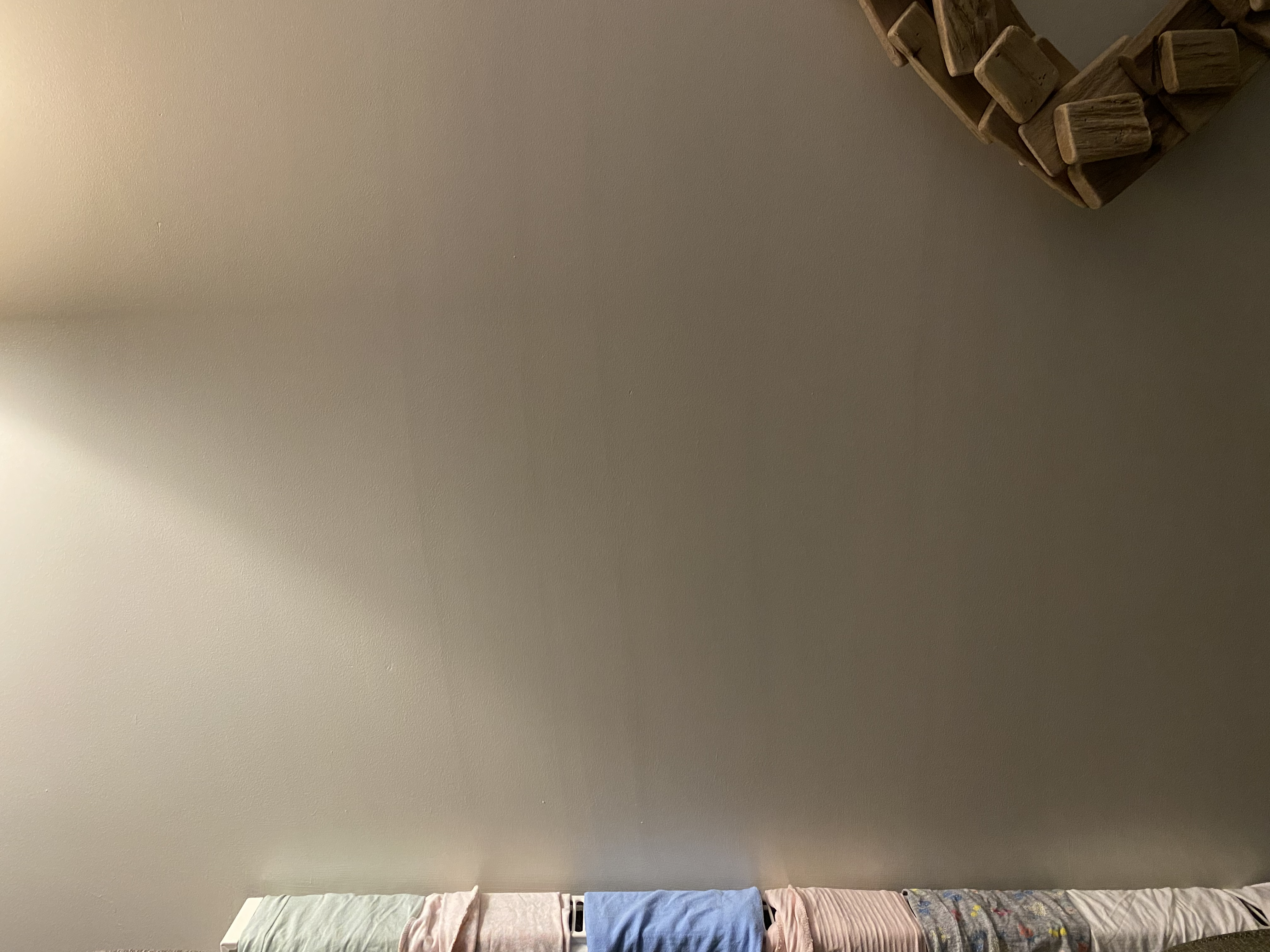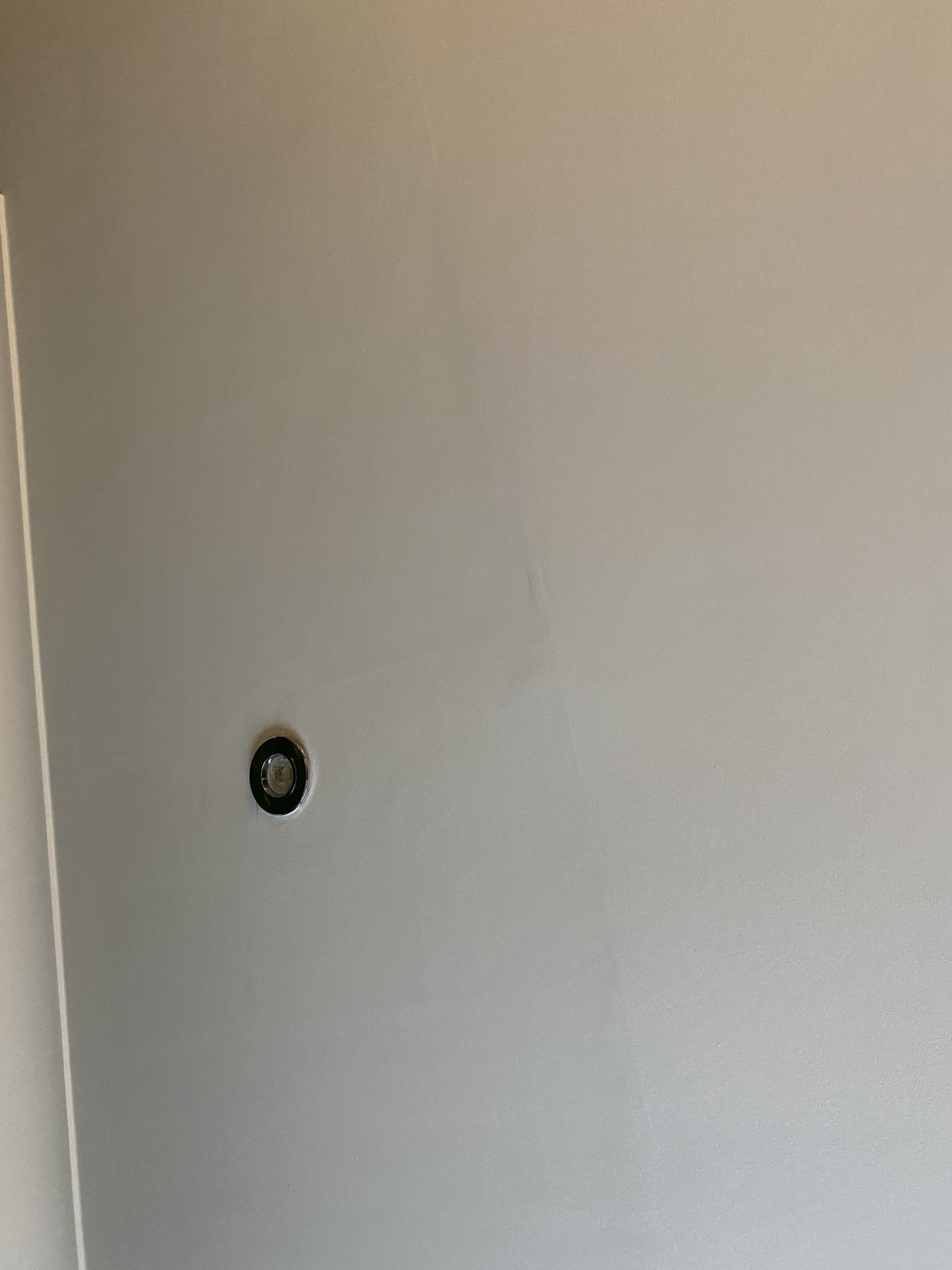We'd like to remind Forumites to please avoid political debate on the Forum... Read More »
📨 Have you signed up to the Forum's new Email Digest yet? Get a selection of trending threads sent straight to your inbox daily, weekly or monthly!
Is this bad plastering?
Options
BellA
Posts: 26 Forumite



The house that we have recently purchased has raised lines in the ceiling and walls, only in the living room.
Is this just bad plastering? And could it be easy to fix?
Is this just bad plastering? And could it be easy to fix?
I’ve attached photos as reference 



0
Comments
-
looks like someone has either scrim taped over joints and not feathered out the plaster enough or they are repairs where the wall has been channeled out perhaps for pipework or cables? is the floor concrete as pipes may come down rather than up if that was the case. Can you feel them if you run your hand over them? careful sanding and maybe local skimming/sanding should get rid of it, easy enough diy job witha bit of patience albeit a bit messy. personally i wouldnt be paying anyone to get rid of them unless you needed other work doing.Worst debt £31,746
April 2023 £16,610 (-47%)3 -
Yes downstairs floor is concrete, and it feels like bumps when you run your hand across it. We need some extra sockets added at some point so I’ll hold out until we have work done until we have it reskimmed. Thank you!JohnJ76 said:looks like someone has either scrim taped over joints and not feathered out the plaster enough or they are repairs where the wall has been channeled out perhaps for pipework or cables? is the floor concrete as pipes may come down rather than up if that was the case. Can you feel them if you run your hand over them? careful sanding and maybe local skimming/sanding should get rid of it, easy enough diy job witha bit of patience albeit a bit messy. personally i wouldnt be paying anyone to get rid of them unless you needed other work doing.
1 -
A ruler or other straight edge should ID how bad it is.
As John points out, the solution will likely be a combi of sanding it flat (for as much as it's just too much filler that hasn't been sanded flat) coupled with a further, wider, band of skim to widen out the raised bits in order to blend - 'feather' - it in. So, gentle sanding first, stopping if/when scrim tape is exposed. If no scrim, then continue to sand flat - jobbie jobbed. If scrim, then stop and feather new skin.
And, yes, wait until the extra work has been done.
Happy New House 1
1 -
Possibly the ceiling ridge is down to the ceiling joists not being level, so one board is at a fractionally different angle to its neighbour, causing a fractional 'elbow' at their join, rather than it being a narrow raised ridge that easy to flatten. If so, it won't easily be able to be fully flattened, but can still be disguised to some degree with more feathering.
Hopefully it's just a raised ridge like on the wall, tho'.1 -
How would I find out if this is the case? I hope it’s not that 🙈ThisIsWeird said:Possibly the ceiling ridge is down to the ceiling joists not being level, so one board is at a fractionally different angle to its neighbour, causing a fractional 'elbow' at their join, rather than it being a narrow raised ridge that easy to flatten. If so, it won't easily be able to be fully flattened, but can still be disguised to some degree with more feathering.
Hopefully it's just a raised ridge like on the wall, tho'.0 -
It's unlikely to be.
If you place a straight edge against it - a ruler or similar - I think it should be obvious whether it's a narrow raised 'ridge' or a change of angle.
0 -
I agree with the above suggested remedies for the wall. It's curious that the vertical bumps all are above the radiator. I'm wondering if the rad was turned on too soon after the wall was plastered and the plaster cracked, then was filled in without being sanded flat (either before or after filling).
What does it sound like when you tap the wall in a few areas over the rad - hollow in parts?
In any case, a bit of sanding and filling by yourself should sort it.
1 -
Ah maybe, the wall is hollow on that side. The ceiling bothered me more as it’s more noticeable and found it strange that both the ceiling and walls in the living room are like that but aren’t like that anywhere else in the house.JohnB47 said:I agree with the above suggested remedies for the wall. It's curious that the vertical bumps all are above the radiator. I'm wondering if the rad was turned on too soon after the wall was plastered and the plaster cracked, then was filled in without being sanded flat (either before or after filling).
What does it sound like when you tap the wall in a few areas over the rad - hollow in parts?
In any case, a bit of sanding and filling by yourself should sort it.
Thank you for the advice 😊0
Confirm your email address to Create Threads and Reply

Categories
- All Categories
- 351.1K Banking & Borrowing
- 253.2K Reduce Debt & Boost Income
- 453.7K Spending & Discounts
- 244.1K Work, Benefits & Business
- 599.2K Mortgages, Homes & Bills
- 177K Life & Family
- 257.5K Travel & Transport
- 1.5M Hobbies & Leisure
- 16.1K Discuss & Feedback
- 37.6K Read-Only Boards

